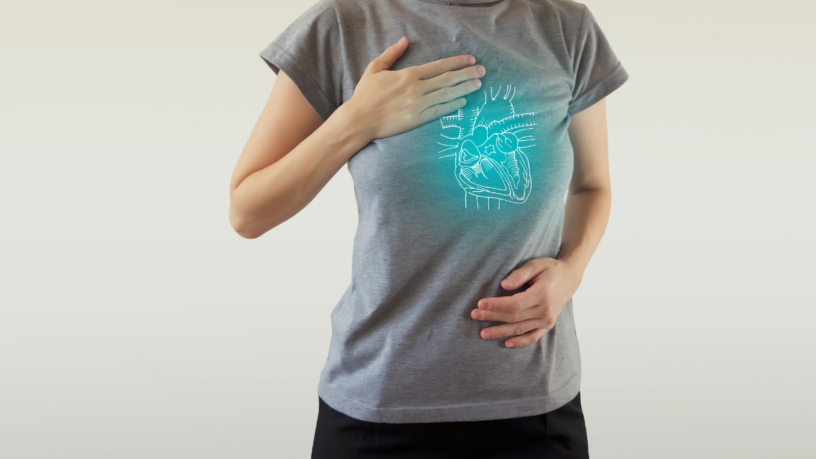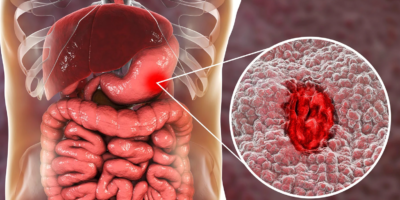Our body requires cholesterol to form the outer layer of cells, make vitamin D, and produce hormones, such as estrogen, progesterone, and testosterone. It’s so important that our livers manufacture plenty of it, regardless of whether we get it in such foods as meat, poultry, fish, eggs, and dairy. But, yes, too much cholesterol is harmful. High cholesterol is a big risk factor for atherosclerosis, a disease in which cholesterol, fat, calcium, and other substances narrow and harden the arteries and lead to reduced blood flow. The result is a heart attack, stroke, and vascular disease. Atherosclerosis is the leading cause of death in people over 45.


1. Cuppa Tea
How it works: Green tea protects arteries from atherosclerosis. Tea drinkers seem to enjoy a reduced risk of a heart attack. Some studies show it lowers cholesterol.
- PREPARATION:
- 1 green tea bag
- 1 cup (235 ml) boiling water
- Honey or other sweeteners, such as stevia (optional)
- DIRECTIONS: Drop the tea bag into the cup of hot water. Add your sweetener of choice, if desired. Enjoy.
- YIELD: 01 SERVING
- NOTE: Green tea contains caffeine. If you are on a noncaffeinated diet, check with your doctor about herbal alternatives.
2. Mom’s Oatmeal
How it works: Oatmeal contains soluble fiber, which reduces the absorption of dietary cholesterol from the intestines into the blood. Some research shows that cinnamon can reduce cholesterol. Apples contain pectin and flavonoids that both lower cholesterol. Walnuts also lower cholesterol.
- PREPARATION:
- 1 cup (235 ml) water
- ½ cup (40 g) regular or quick-cooking (not instant) rolled oats
- Pinch of salt
- ½ cup (75 g) diced apple
- 2 tablespoons (15 g) sliced or chopped walnuts
- Honey (optional)
- 1 teaspoon (2 g) ground cinnamon
- DIRECTIONS: Combine the water, oats, and salt in a microwave-safe bowl. Microwave on high for 1 minute and then stir in the apple, walnuts, and cinnamon. Microwave for another minute. Remove from the microwave. Taste it before adding honey. (The apple provides natural sweetness.) Enjoy while still piping hot.
- YIELD: 01 SERVING
3. Fab Flax Smoothie
How it works: Scientists believe that the fiber in the coat of the flaxseed binds with cholesterol in the intestine to inhibit absorption into the bloodstream. Strawberries also contain soluble plant fibers and plant stanols that block cholesterol absorption.
- PREPARATION:
- 1 cup (230 g) nonfat yogurt
- 6 strawberries, halved
- 2 tablespoons (14 g) flaxseed meal
- DIRECTIONS: Place the yogurt, strawberries, and flaxseeds in a blender and process until combined.
- YIELD: 1 To 2 SERVING
4. Psyllium Smoothie
How it works: Fiber-rich psyllium seed husks, when mixed with water, form a gel that binds cholesterol in the intestine, thereby reducing its absorption into the blood. It also increases the elimination of cholesterol from the body. These fruits provide fiber and antioxidants.
- PREPARATION:
- ¼ cup (38 g) strawberries
- ¼ cup (38 g) blueberries
- ½ banana
- 1 cup (235 ml) water
- 3 ice cubes (optional)
- 1½ teaspoons (10 g) honey (optional)
- 1 teaspoon (6 g) psyllium husks
- DIRECTIONS: Place the fruits in a blender. Add the water, ice cubes (if desired), honey, and psyllium, and blend until smooth. Enjoy!
- YIELD: 02 SERVING
5. Artichokes and Garlic Dip
How it works: FArtichokes are shown to reduce LDL cholesterol. Some studies indicate that garlic reduces LDL cholesterol. It protects LDL from oxidation, discourages blood clots from forming within the arteries, modestly lowers blood pressure, helps maintain the elasticity of arteries, and slows the development of atherosclerosis.
- PREPARATION:
- 1 cup (235 ml) olive oil
- 1 garlic clove, crushed
- Salt and freshly ground black pepper
- 2 artichokes
- ¼ cup (60 ml) water
- DIRECTIONS:
Pour the olive oil into a small bowl. Mix in the garlic. Stir in salt and pepper to taste.
On a cutting board, cut the artichoke stems to 1 inch (2.5 cm) long. Snip off the sharp tips of the petals. Slice each one in half lengthwise. Scoop out the prickly “choke” inside. Fill a microwave-safe dish with water. Layout the four artichoke halves, cut side down, and cover with waxed paper or a lid. Microwave on HIGH until tender, about 10 minutes. Let stand for 1 to 2 minutes to cool. Pull off the leaves and dip the fleshy part into the olive oil mixture.
- YIELD: 02 SERVING
- WARNING: Stop taking garlic supplements two weeks before surgery. If you’re taking blood-thinning medication such as warfarin (Coumadin), talk to your doctor first before adding garlic supplements or raw garlic to your diet. Garlic could potentially increase the action of the medication.
6. Beneficial Barley Soup
How it works: Barley is made of viscous, or soluble, fiber, which helps keep cholesterol from absorbing into the blood. Studies show that replacing animal protein with soy foods can lower LDL cholesterol and blood pressure, among other benefits.
- PREPARATION:
- 3 cups (710 ml) water
- ½ cup (92 g) uncooked barley
- 1 tablespoon (15 ml) olive oil
- 1 onion, finely chopped
- 1 teaspoon (3 g) diced garlic
- ½ cup (35 g) sliced mushrooms
- 2 tablespoons (32 g) miso paste
- Pinch of freshly ground black pepper
- 1 cup (248 g) cubed tofu (optional)
- DIRECTIONS:
In a large pot, combine the water and barley. Bring to a boil, lower the heat, and simmer on low heat for 30 minutes.
In a separate pan, combine the olive oil, onion, garlic, and mushrooms and sauté over medium heat until tender, about 5 minutes. Add the miso paste and pepper to the sauté pan. Then add the tofu, if using, and continue cooking the mixture for an additional 2 minutes.
Pour the sautéed mixture into the barley pot. Stir well. Ladle the mixture among four plates.
- YIELD: 04 SERVING
7. Cinnamon-Hibiscus Tea
How it works: Preliminary research suggests that cinnamon helps reduce blood levels of cholesterol and glucose (sugar). Hibiscus contains antioxidants and helps to reduce blood pressure.
- PREPARATION:
- 1 teaspoon (3 g) dried hibiscus
- 1 teaspoon (3 g) dried rose hips
- 1 teaspoon (5 g) cinnamon chips, from a crushed cinnamon stick
- 1 cup (235 ml) boiled water
- DIRECTIONS: Combine all the dried ingredients. Pour into the boiled water and let steep for 15 minutes. Strain and drink.
- YIELD: 01 SERVING
8. Hummus Dip with Celery Sticks
How it works: Chickpeas are a rich source of soluble fiber, keeping cholesterol from absorbing into the blood. They also provide omega-3 fats, potassium, and manganese.
- PREPARATION:
- 1 can (14 ounces, or 400 g) chickpeas, drained and rinsed
- ²∕3 cups (153 g) plain low-fat yogurt
- I garlic clove, chopped
- Pinch of paprika, plus more if desired
- Pinch of ground cumin
- Juice of ½ lemon
- Olives, sliced cucumbers, and tomatoes, for garnish
- Celery sticks
- DIRECTIONS:
Place the chickpeas, yogurt, and garlic in a blender and blend until smooth. Add the paprika, cumin, and lemon juice and blend once more until smooth.
Pour the hummus into a serving dish and garnish it with olives, cucumbers, and tomatoes.
Add additional paprika, if desired. Serve with celery sticks.
- YIELD: 4 TO 6 SERVING
9. Wholly Guacamole
How it works: Studies show that avocado, an excellent source of soluble fiber, has 15 grams of heart-healthy unsaturated fat, helps reduce LDL, and may increase HDL cholesterol. Lab studies show that cayenne lowers cholesterol and protects it from oxidation.
- PREPARATION:
- 3 avocados, peeled, pitted, and mashed
- Juice of 1 lime
- 1 teaspoon (6 g) salt
- ½ cup (80 g) diced onion
- 3 tablespoons (3 g) chopped fresh cilantro
- 2 small tomatoes, diced
- 1 teaspoon (3 g) minced garlic
- Pinch of cayenne
- ½ teaspoon hot sauce (optional)
- DIRECTIONS: In a medium-size bowl, mash the avocados with lime juice and salt. Mix in the onion, cilantro, tomatoes, and garlic. Stir in the cayenne and hot sauce, if using. Serve immediately.
- YIELD: 06 SERVING
10. Nuts for an Almond Snack
How it works: Almonds, walnuts, and other nuts are rich in soluble fiber, keeping cholesterol from absorbing into the blood. They also contain heart-healthy fats. Cayenne has been seen to lower cholesterol, too, and protects it from oxidation
- PREPARATION:
- 8 ounces (225 g) whole, raw almonds
- ½ teaspoon sea salt
- 1 teaspoon (5 ml) olive oil
- Pinch of cayenne pepper (optional)
- DIRECTIONS:
Preheat the oven to 350°F (180°C, or gas mark 4).
Spread the almonds across a glass baking dish. Add the salt and olive oil and stir to combine. Roast for 10 to12 minutes. Remove the pan from the oven and add the cayenne, if using, for extra zing. Let cool for an hour.
- YIELD: ABOUT A DOZEN HANDFULS
Fact Or Myth?
- A DIET HIGH IN PLANTS IS AN EFFECTIVE CHOLESTEROL MEDICATION. In a recent study, researchers asked thirtyfour people with high cholesterol to try three diets. The first was low in saturated fat; the second was the same diet, only adding the cholesterollowering medication Mevacor (lovastatin); the third had no medication but was high in plant sterols, soy protein foods, and foods rich in viscous fibers. The second and third diets were the winners in lowering cholesterol. For nine people, the plantonly diet was the most effective.
- IF RED GRAPES ARE GOOD FOR YOUR CHOLESTEROL, RED WINE IS EVEN BETTER. Well, yes and no. Drinking a moderate amount of wine raises HDL cholesterol levels. Red wine (made from red grapes) also contains potent antioxidants. However, red grape juice also raises HDL and provides antioxidants.) Note that a moderate amount of wine means one 5ounce (150 ml) glass a day for women and two for men because more could do more harm than good. The skin of red grapes has another added value: antioxidants.
- WHITE BREAD CAN BE BAD FOR YOUR HEALTH. Yes. Its refined carbohydrates quickly raise blood sugar, which can increase blood triglycerides, or fats, and elevate blood pressure. Like high cholesterol, high triglyceride levels are a risk factor for cardiovascular disease.
Lifestyle Tip
- Keep a bowl of red grapes handy. They contain resveratrol, a potent antioxidant with cardiovascular benefits.
- Drink a glass of cranberry juice every day or pop a handful of blueberries. Both contain polyphenols, which help increase the resistance of LDL to oxidation, thus playing a part in protecting the arteries and reducing blood pressure and heart disease.
- Add 2 teaspoons (8 g) of psyllium husks to water every morning. Stir well and drink. Besides helping lower cholesterol, it will keep you regular. Make sure to chase the glass of psyllium with a full glass of water.
- Go for a walk. Exercise is one of the best ways of increasing HDL, the “good” cholesterol.
- Substitute olive oil for butter. Olive oil is high in monounsaturated fat, which helps increase HDL cholesterol and lowers your risk of heart disease. Butter, on the other hand, is high in saturated fat. as in red meat, the saturated fat in butter and other full-fat dairy products increases both HDL and in LDL cholesterol. While HDL is considered protective, LDL contributes to arterial disease.






Leave a Reply